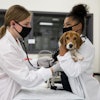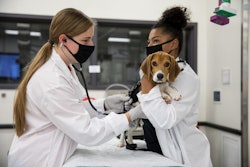 Dr. Kent Smith leads the Native Explorers participants this past May. (Photo courtesy of Oklahoma State University-Tulsa)
Dr. Kent Smith leads the Native Explorers participants this past May. (Photo courtesy of Oklahoma State University-Tulsa)
The office, which was formally created in March, is building a series of STEM development programs for the 39 federally recognized tribes of Oklahoma. Smith is the architect behind it, proposing the concept and now helping to get it off the ground by building on programs he has already created and furthering outreach to tribal communities across the state.
Oklahoma’s population is 9 percent American Indian, but that population is highly underrepresented in the STEM fields.
American Indians from the national high school class of 2010 had a graduation rate of 51 percent — and only a tiny fraction went on to pursue STEM in college. In Oklahoma, the numbers are a little better, though still troubling. Oklahoma’s high school class of 2010 graduated 63 percent of American Indian students, according to the National Center for Education Statistics.
“In my opinion, part of the problem for the lack of Natives in these disciplines is [that] there are no mentors,” Smith says. Through engaging volunteers and the OHU-CHS community in his outreach efforts to the tribes, Smith hopes to provide mentors for Native students.
The lack of Native American students in STEM fields touches on another issue: Oklahoma has one of the lowest ratios of primary care physicians per 100,000 inhabitants, particularly in rural areas, where many Native people live. If more Native students choose to go into STEM and medical fields, that may help solve that imbalance, particularly if they decide to return to serve their communities postgraduation.
“Dr. Smith has done a phenomenal job working with the primary tribes, as well as the smaller tribes across the state,” says Dr. William J. Pettit, interim senior associate dean of academic affairs at the College of Osteopathy at OSU-CHS.















